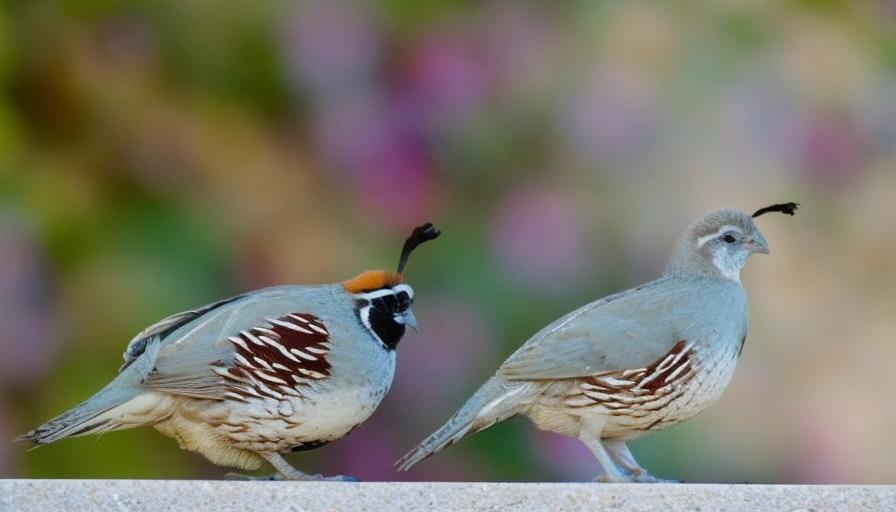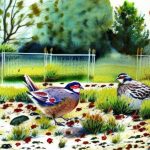Proper quail breeder cages are essential for the health and well-being of quail and for maximizing productivity in a breeding operation. These cages provide a safe and secure environment for quail to lay eggs, incubate them, and raise their young. Without the right cages, quail may become stressed, leading to decreased egg production and poor hatch rates. Additionally, inadequate cages can lead to injuries and even death among the quail population. Proper breeder cages also help to prevent the spread of diseases and parasites, which can quickly devastate a quail breeding operation. Overall, investing in high-quality breeder cages is crucial for the success and sustainability of a quail breeding business.
Proper quail breeder cages are also important for maintaining the genetic integrity of the quail flock. Breeder cages allow for the selective breeding of quail with desirable traits, such as high egg production, strong immune systems, and good temperament. By separating breeding pairs in individual cages, breeders can carefully control which birds mate with each other, ensuring that the desired genetic traits are passed on to the next generation. This selective breeding process is essential for improving the overall quality of the quail flock and producing birds that are well-suited for their intended purpose, whether it be for egg production, meat, or hunting. Without proper breeder cages, it would be nearly impossible to maintain the genetic diversity and quality of the quail flock over time.
Key Takeaways
- Proper quail breeder cages are essential for maintaining the health and safety of quail and maximizing productivity.
- When choosing a quail breeder cage, consider factors such as size, material, and design to ensure the comfort and well-being of the quail.
- Setting up and maintaining quail breeder cages involves regular cleaning, providing proper ventilation, and ensuring adequate space for the quail to move around.
- Ensuring the health and safety of quail in breeder cages requires monitoring for signs of illness, providing a balanced diet, and implementing biosecurity measures.
- Maximizing productivity in quail breeder cages involves creating a conducive environment for breeding, providing proper lighting, and managing stress levels in the quail.
- Common mistakes to avoid in quail breeder cages include overcrowding, poor ventilation, inadequate nutrition, and neglecting to monitor for signs of illness.
- Upgrading and expanding quail breeder cage operations may involve investing in larger cages, implementing automated feeding systems, and expanding the breeding program to increase productivity.
Choosing the Right Quail Breeder Cage
When choosing quail breeder cages, there are several important factors to consider. First and foremost, the size of the cage is crucial. Breeder cages should provide enough space for each pair of quail to move around comfortably and engage in natural behaviors such as dust bathing and nesting. A good rule of thumb is to provide at least 1 square foot of floor space per bird, but larger cages are always better if space allows. Additionally, the height of the cage is important, as quail are known to be excellent flyers. The cage should be tall enough to allow quail to fly up and perch, as this is a natural behavior that helps to reduce stress and aggression among birds.
Another important consideration when choosing breeder cages is the material from which they are made. Ideally, breeder cages should be made from durable, non-toxic materials that are easy to clean and disinfect. Stainless steel, galvanized wire, and high-quality plastics are all good options for breeder cage construction. It’s also important to consider the design of the cage, including features such as removable trays for easy cleaning, secure latches to prevent escapes, and access doors for handling the birds. Finally, consider the long-term durability of the cages, as investing in high-quality cages upfront can save money in the long run by reducing the need for frequent replacements.
Setting Up and Maintaining Quail Breeder Cages
Once the right quail breeder cages have been chosen, it’s important to set them up properly and maintain them regularly to ensure the health and well-being of the quail. When setting up breeder cages, it’s important to provide appropriate bedding material such as pine shavings or straw to create a comfortable and clean environment for the birds. Nesting boxes should also be provided to give quail a place to lay their eggs and raise their young. These boxes should be placed in a quiet, secluded area of the cage to provide privacy for the breeding pairs.
Maintaining breeder cages involves regular cleaning and disinfection to prevent the spread of diseases and parasites. Droppings should be removed from the cages daily, and bedding material should be replaced regularly to keep the environment clean and dry. Additionally, feeders and waterers should be cleaned and refilled daily to ensure that quail have access to fresh food and water at all times. Regular inspections of the cages should also be conducted to check for any signs of damage or wear that could compromise the safety and security of the birds.
Ensuring the Health and Safety of Quail in Breeder Cages
The health and safety of quail in breeder cages should be a top priority for any quail breeding operation. One of the most important aspects of ensuring quail health is providing a balanced diet that meets their nutritional needs. Breeding pairs should be fed a high-quality game bird feed that is specifically formulated for quail, as well as additional calcium supplements to support egg production. It’s also important to provide access to grit and oyster shell, which help quail to digest their food and maintain strong eggshells.
In addition to nutrition, it’s crucial to monitor the overall health of quail in breeder cages on a regular basis. This includes observing their behavior, checking for signs of illness or injury, and conducting routine health checks such as weighing birds and examining their plumage. Any sick or injured birds should be promptly removed from the breeding cages and provided with appropriate care and treatment. It’s also important to work with a veterinarian who has experience with poultry to develop a comprehensive health management plan for the quail flock.
Another key aspect of ensuring the health and safety of quail in breeder cages is providing appropriate environmental enrichment. This includes providing perches, dust bathing areas, and other features that allow quail to engage in natural behaviors and reduce stress. Enriching the environment can help to prevent behavioral issues such as aggression and feather picking, which can be common in breeding situations. Overall, creating a safe and stimulating environment for quail in breeder cages is essential for their physical and psychological well-being.
Maximizing Productivity in Quail Breeder Cages
Maximizing productivity in quail breeder cages requires careful management of breeding pairs and their offspring. One important aspect of productivity is ensuring that breeding pairs are well-matched and healthy. Pairs should be selected based on desirable genetic traits such as high egg production, strong immune systems, and good temperament. Additionally, it’s important to monitor breeding pairs closely to ensure that they are mating successfully and producing viable eggs.
Once eggs are laid, they should be collected daily and either placed in an incubator or left with the breeding pair for natural incubation. Proper incubation techniques are crucial for maximizing hatch rates and producing healthy chicks. After hatching, chicks should be carefully monitored and provided with appropriate care to ensure their survival and growth. This includes providing access to heat lamps or brooders, as well as a balanced diet that meets their nutritional needs.
In addition to managing breeding pairs and their offspring, it’s important to keep detailed records of breeding activities and productivity in order to track performance over time. This includes recording data such as egg production rates, hatch rates, chick survival rates, and any health issues that arise within the breeding pairs or their offspring. By analyzing this data, breeders can identify trends and make informed decisions about which pairs to continue breeding and which ones may need to be replaced.
Common Mistakes to Avoid in Quail Breeder Cages

There are several common mistakes that breeders should avoid when managing quail breeder cages in order to ensure the success of their operation. One common mistake is overcrowding breeder cages, which can lead to stress, aggression, and decreased productivity among quail. Overcrowding can also increase the risk of disease transmission and make it difficult to monitor individual birds for health issues or behavioral problems. It’s important to provide enough space for each pair of quail to move around comfortably and engage in natural behaviors.
Another common mistake is failing to provide proper environmental enrichment in breeder cages. Without access to perches, dust bathing areas, and other enrichment features, quail may become bored and stressed, leading to behavioral issues such as aggression or feather picking. Enriching the environment can help to reduce stress and improve overall welfare among breeding pairs.
Additionally, breeders should avoid neglecting regular cleaning and maintenance of breeder cages. Failure to keep cages clean can lead to the spread of diseases and parasites among quail, as well as increased stress due to poor living conditions. Regular cleaning and disinfection are essential for maintaining a healthy environment for breeding pairs.
Upgrading and Expanding Quail Breeder Cage Operations
As a quail breeding operation grows, it may become necessary to upgrade or expand breeder cage operations in order to accommodate a larger flock or improve productivity. Upgrading breeder cages may involve investing in larger or more durable cages that can better meet the needs of breeding pairs. It may also involve adding features such as automatic feeders or waterers to streamline daily care routines.
Expanding breeder cage operations may involve building additional cages to house more breeding pairs or creating separate areas for different stages of breeding (e.g., egg laying, incubation, chick rearing). It’s important to carefully plan any expansions in order to ensure that they meet the needs of both the birds and the breeders.
When upgrading or expanding breeder cage operations, it’s important to consider factors such as space limitations, budget constraints, and long-term goals for the breeding operation. Working with experienced professionals such as cage manufacturers or poultry consultants can help breeders make informed decisions about how best to upgrade or expand their operations while maintaining high standards for animal welfare and productivity.
If you’re interested in quail breeder cages, you may also want to learn about the mating season for ducks. Understanding the timing and behavior of duck mating season can be crucial for successful breeding. Check out this informative article on Poultry Wizard to gain insights into when is the best time for duck mating.
FAQs
What are quail breeder cages?
Quail breeder cages are specially designed enclosures used for housing and breeding quail. These cages are equipped with features that cater to the specific needs of quail, such as nesting areas, feeding and watering systems, and adequate space for the birds to move around.
What are the benefits of using quail breeder cages?
Quail breeder cages provide a controlled environment for breeding quail, allowing breeders to monitor and manage the birds more effectively. These cages also help to prevent overcrowding, reduce the risk of disease transmission, and make it easier to collect eggs and maintain cleanliness.
What features should I look for in quail breeder cages?
When choosing quail breeder cages, look for features such as removable trays for easy cleaning, adjustable dividers to separate birds, secure latches to prevent escapes, and adequate ventilation to ensure good air circulation. Additionally, consider the size of the cage to ensure that it can accommodate the number of quail you plan to breed.
How should I set up quail breeder cages?
When setting up quail breeder cages, provide a comfortable nesting area with suitable bedding material, a reliable source of clean water, and a balanced diet of quail feed. It’s also important to monitor the temperature and humidity levels within the cages to create an optimal environment for breeding and egg production.
Are there different types of quail breeder cages available?
Yes, there are various types of quail breeder cages available, including wire cages, plastic cages, and wooden cages. Each type has its own advantages and considerations, so it’s important to choose the one that best suits your specific needs and preferences.
Meet Walter, the feathered-friend fanatic of Florida! Nestled in the sunshine state, Walter struts through life with his feathered companions, clucking his way to happiness. With a coop that’s fancier than a five-star hotel, he’s the Don Juan of the chicken world. When he’s not teaching his hens to do the cha-cha, you’ll find him in a heated debate with his prized rooster, Sir Clucks-a-Lot. Walter’s poultry passion is no yolk; he’s the sunny-side-up guy you never knew you needed in your flock of friends!







